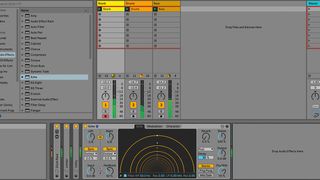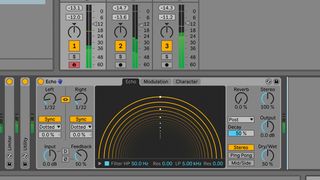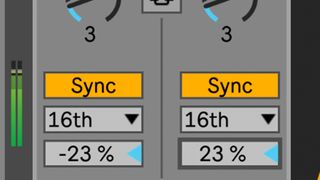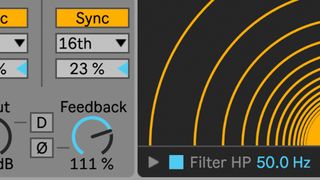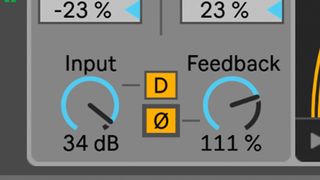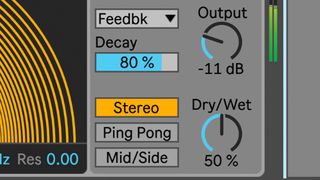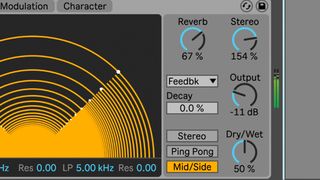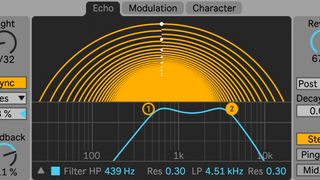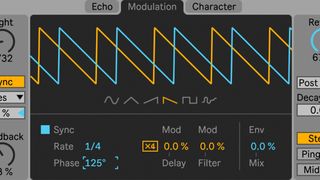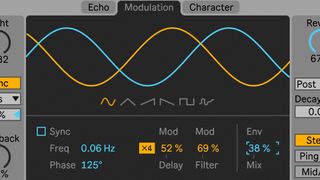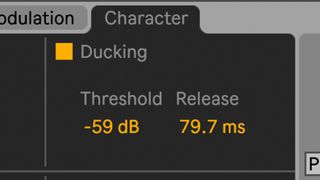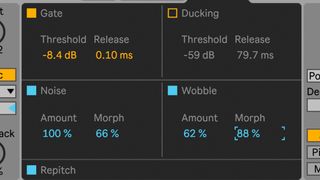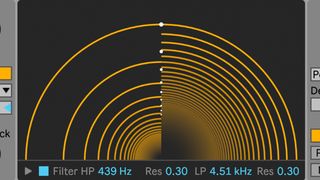Heavier7Strings is a metal guitar emulation virtual instrument based on a guitar sample library, made by Three Body Tech developers from China. As soon as I heard a demo, I knew that I’d like to try it. Having been a guitar player for almost 30 years, it is not so easy to fool me with some “wanna-be” guitar sounds, but this one sounds quite real, not to mention the fact that it comes with over 200 MIDI clips that can be loaded into your sequencer for further manipulation. After installing this 9 GB beast I spent some time glancing through the quite-detailed manual, along with browsing for some video tutorials, as it proves not to be a “first try – first success” sort of plug-in, or to put it simply, I was not able to get immediate results. Of course, when I finally figured out how everything worked, everything seemed so logical, easy and well-placed.
Finally, after all the tutorials and manuals, I was on the road to making my own riffs. If you listen to Heavier7Strings in isolation, you may notice some tiny moments that can give you a clue that this is not a real guitar played by a guitarist, but, at least in my opinion, they are so small that only a skilled guitar player can hear the difference. This is definitely not the case with any other guitar library/instrument that I’ve tried before. Most of them sound quite solid in a full arrangement, but sounds obviously fake in isolation, mainly because the attack was too prominent causing the whole thing to sound more like a harpsichord and not like a guitar at all. Next thing with all other guitar emulations is the issue with the transitions between riffs, or even between some notes in solo phrases, that sounded a bit off, unnatural. Those are only two of the main reasons, but truth be told there are also all sorts of other, maybe not so prominent, smaller guitar misbehaviors comes with all other guitar emulation software, that can be spotted even by non-guitar players. So, thumbs up, my dear China friends. This one comes quite close even in isolation.
As soon as you put virtual drums and virtual bass alongside Heavier7Strings, everything becomes absolutely real and wild. You need to be a really, really picky guitar expert to notice the difference (and trust me, it is better to have good fake guitar than a bad live guitar player). Riffs and even lead lines sound very authentic. Of course, my dear keyboard playing friends, it would not hurt if you know at least the basics about how harmonies are played on guitar, or at least know how to recreate a few basic heavy guitar riffs. Even if you are somewhat barefoot in this field, there are those aforementioned 200 preprogrammed MIDI patterns that should serve as a good starting point.
Menu
Let’s go through some details. Top left is the main menu, with five buttons. First two are reserved for load or save options where you can store specific settings for the whole instrument. Last button is reserved for Settings, where I have set Zoom to 125% as the main window was a bit small for my taste. Of course, this is not the only thing that you can set there.
The most interesting parts of the menu, at least for me, are Patterns and Effects buttons, opening new windows with this two parts. For a better understanding, we should explain that the main structure or base for the whole instrument is clean sounding electric guitar samples that are processed later through a quite impressive and detailed effects rack. So, in the effects section you can drag various effects into the rack directly from the left side menu. Also, you can simply load some ready made effects rack combinations from the right menu with the browser, where you can select one of many effects combinations, choosing between Ambients, Clean, Epic Riffs, Metal Riffs, Overdriven, Rock Riffs, Solo or Strumming group. There is also a set of options here to save, delete, create a new group or separate presets within a group.
Main Window
There are a few ways to control your playing. One is with velocity. Also, almost everything is controllable through CC controllers. The modulation wheel switches between palm mute and normal legato notes. There is also a nice number of key-switches for all sorts of functions – again my favorite is the Repeat function where some keys repeat muted notes that you hold higher on the keyboard range, while other Repeat keys repeat open notes. It allows you to go wild, changing chords with the right hand and banging rhythms with right hand just by changing between Mute-Repeat and Open-Repeat keys. In the upper keyboard range we also find an octave with harmonic control. It is very nice addition, being able to reach some functions and articulations in different ways, leaving the final choice to the user, not being so determined by the developer’s choice. Specifically regarding those palm mutes: open note combinations are on some occasions not so easy to control just by velocity, and it is far easier to achieve this through the mod wheel or simply by drawing some controllers in the CC controller editor.
Conclusions
Once I had gotten a grip on it, Heavier7Strings has been one of the most joyful instruments that I’ve used lately. It is not just a tool for creating angry metal riffs, but also for playing mad metal solo lines, sounding absolutely realistic with all the elements that you hear in most metal songs. I didn’t elaborate on this part, but according to some third party demo clips, with some keyboard playing skills and a few CC/key-switch changes, it can be done perfectly. Playing chords and melodies with clean sounds is also quite enjoyable and surprisingly realistic. Some clean presets sound a bit 80’s, but otherwise very impressive.
It’s one of the best heavy guitar recreations that I’ve heard and tried in the last decade – and I’ve heard and tried quite a few of them. Even if you are a guitar player, sometimes it is quite a bit easier to use such an instrument. And if you are not, and you are looking for such an addition to your sound arsenal, then this is a must.
More info and some additional video and audio clips at:



